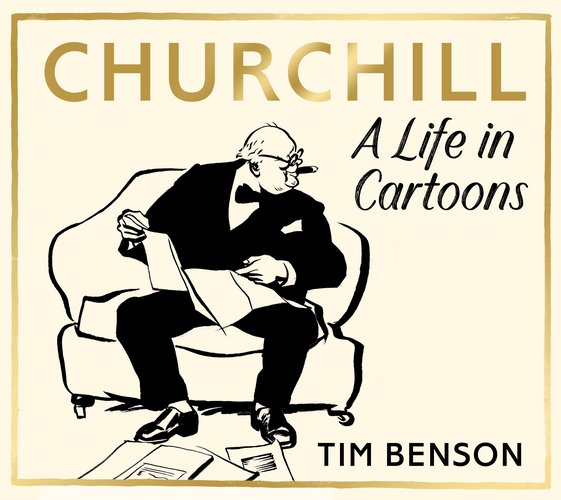Blog > General > Churchill A life in Cartoons A Review by Gary Stiles
Churchill A life in Cartoons A Review by Gary Stiles
Posted on Wednesday 19th June 2024 by Tim
Tim Benson, Churchill: A Life in Cartoons, A review by Gary L. Stiles
The use of caricature as a form of artistic creation and as a means of praising or inflicting scorn or ridicule on an individual is as old as drawing itself. Punch, the iconic British magazine, was the first to popularize the use of the word “cartoon” for this type of drawing. During the late nineteenth and early twentieth century Punch recruited a team of cartoonists who would take the art to a new level of quality and sophistication.
In the last 150 years there has been no political figure who has been the subject of more political cartoons than Winston Churchill. His outspoken stance on almost all issues created an opportunity for political cartoonists to praise or pillory him. Not surprisingly there have been several books on the subject. Churchill wrote about it himself in Thoughts and Adventures. He acquired and displayed some of his favorite cartoons at Chartwell. He even enjoyed cartoons that were not particularly flattering.
Tim Benson also has a lifelong fascination with political cartoons and has studied, curated, and written extensively about them. He is widely and appropriately acknowledged to be an expert in the field. Benson’s new book, Churchill: A Life in Cartoons, is therefore a welcome and important addition to this genre—especially given that it contains more than 300 cartoons, most of which have not been utilized in previously published books.
Benson’s selection is well chosen. The cartoons represent a diverse set of publications espousing a wide spectrum of political beliefs, and with great skill Benson has created a highly readable, entertaining, and politically insightful description for each cartoon. The descriptions are crisp yet sufficiently robust in facts, quotes, and background for the reader to comprehend fully the message and impact of each cartoon. The book covers most of the major and many of the minor events in Churchill’s political career, from the wilderness years through the challenge of the war and the triumph of V-E Day.
The book predominantly focuses on cartoons from the United Kingdom, but Benson also includes about eighty cartoons from other English-speaking countries, including the US, Canada, and Australia. For each international cartoon, Benson provides a short but insightful description concerning the contemporaneous politics in each country and how the politicians and populace viewed and reacted to Churchill and his politics.
Appropriately, there is a balance of positive and negative cartoons throughout the book. Additionally, there are thirty cartoons from Germany, which present a unique and often contrarian view of Churchill. The inclusion of these cartoons is important because it provides much information and context for how Hitler and the Nazi Party viewed Churchill. Through the juxtaposition of these cartoons with cartoons from the Allied nations, Benson demonstrates how the German cartoons themselves often provided fodder for many of the world’s cartoonists.
The book’s selection, 200 of 242 pages, concentrates on the years 1931–1945. This provides Benson with the ability to focus in depth on Churchill’s warning of the threat of Hitler (not received well), the resistance of the Government to bring him back into a leadership position and then to cover the war years in depth.
There are, however, small sections on the years 1914–1920 and the post-war years. These sections provide important cartoons critical to understanding Churchill’s political life and personality. The book does not highlight some of the greates cartoonists of the era, such as Poy, Low, and the cadre at Punch, but these men have been covered in depth already in other books, and thus allows Benson to include many “new” cartoons. A great strength of the book is, in fact, the presentation of a large selection of previously uncollected cartoons.
No description of Churchill and how he was represented in cartoons would be complete without considering the fascination of cartoonists with Churchill’s foibles, distinctive features, and props. Benson describes and documents the evolution of the use of these features from the myriad hats worn by Churchill to his cigar, victory sign, and bulldog image. One image that is not commonly mentioned but is shown in this book and described is the “thumbs up” gesture that Churchill frequently used during the Second World War in his tours of bombed areas in England and how people responded with the same gesture.
No book is perfect, and this one one could have been strengthened by the inclusion of an index of topics, cartoonists, and quotations. In fact, there are no citations at all. Additionally, the book is only available in softcover. Undoubtedly, most Churchillians, a well-known subspecies of bibliophile, would prefer to have a hardcover edition with a dust jacket.
Nevertheless, all who enjoy studying the depiction of Churchill in political cartoons should buy and read this delightful book.
Gary L. Stiles is author of Churchill in Punch (2022).
 View Account
View Account